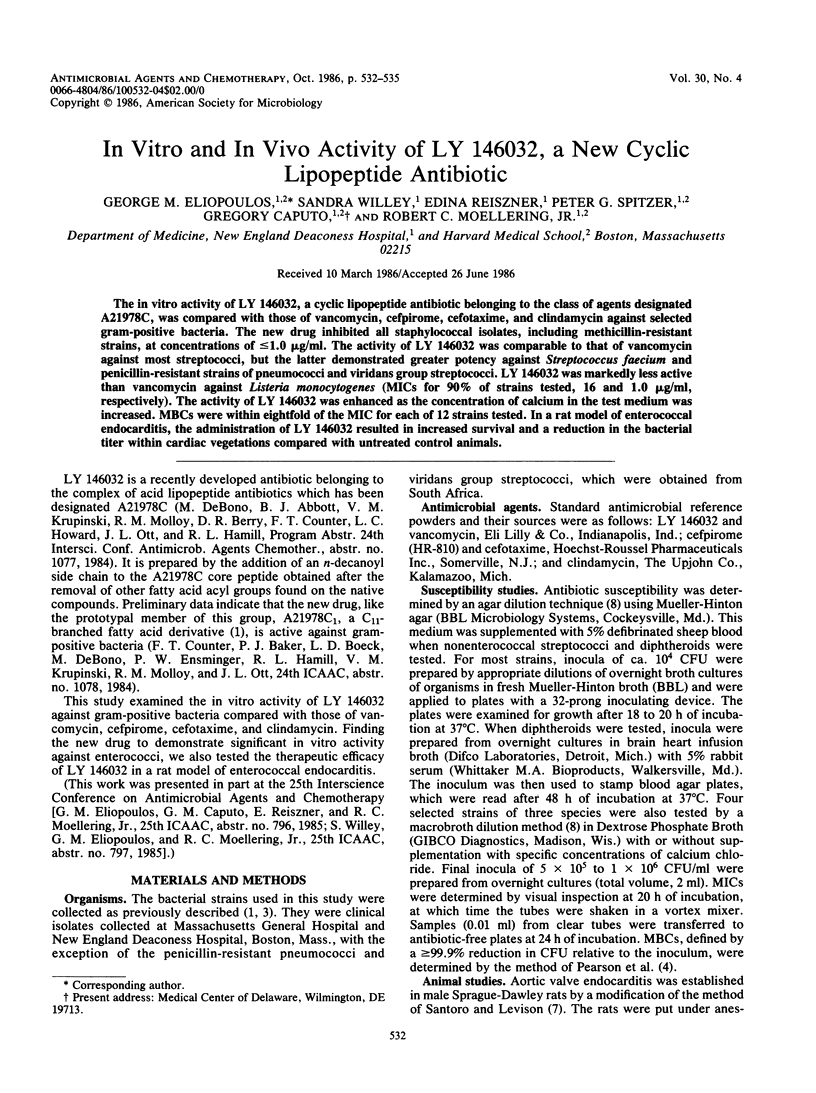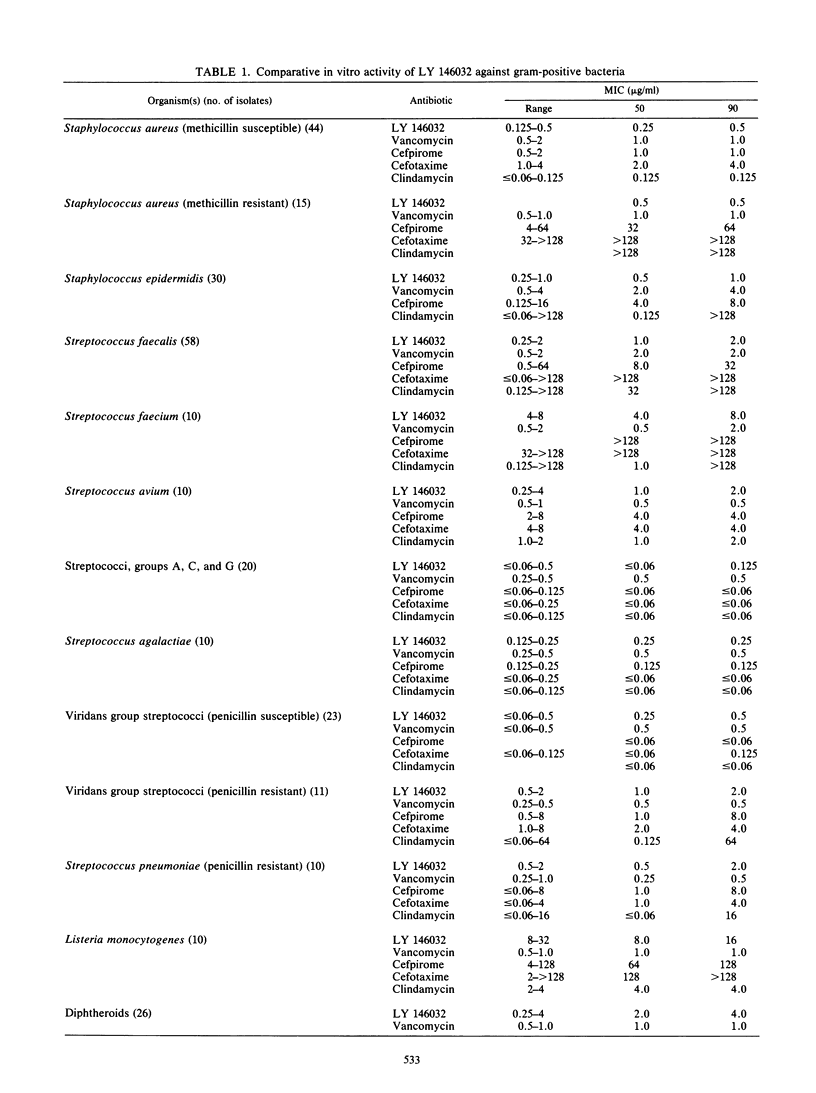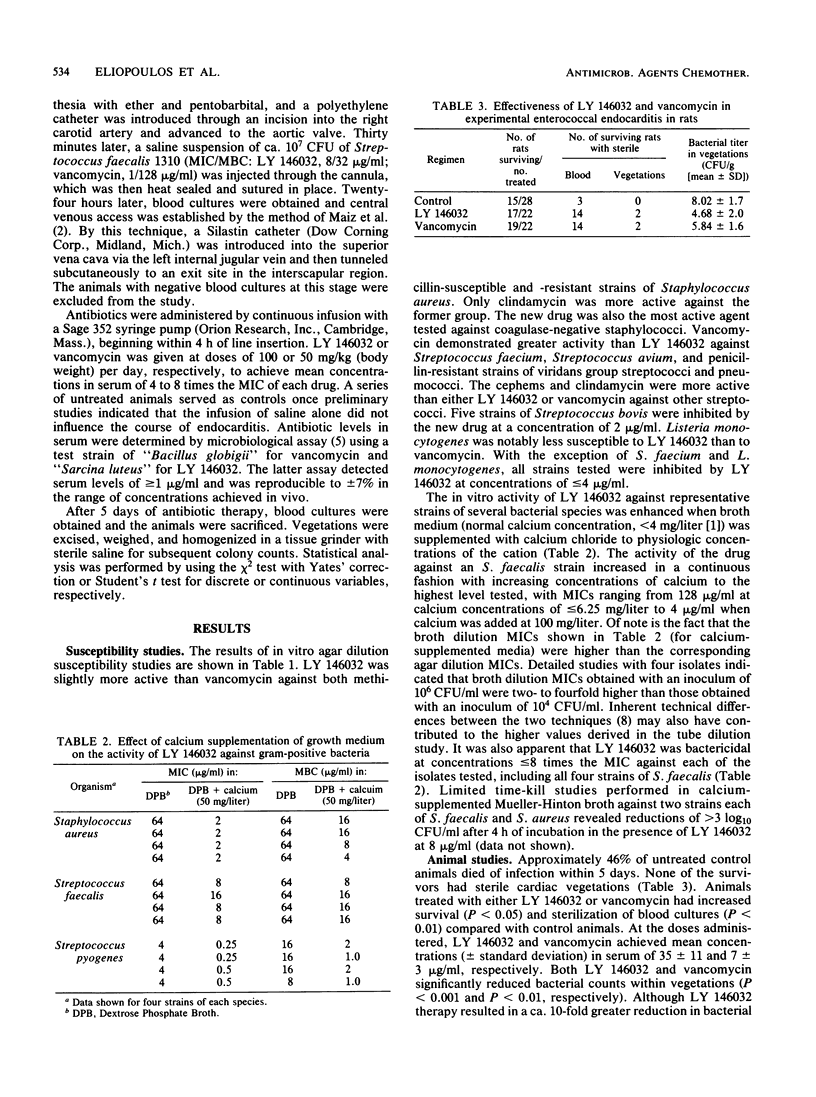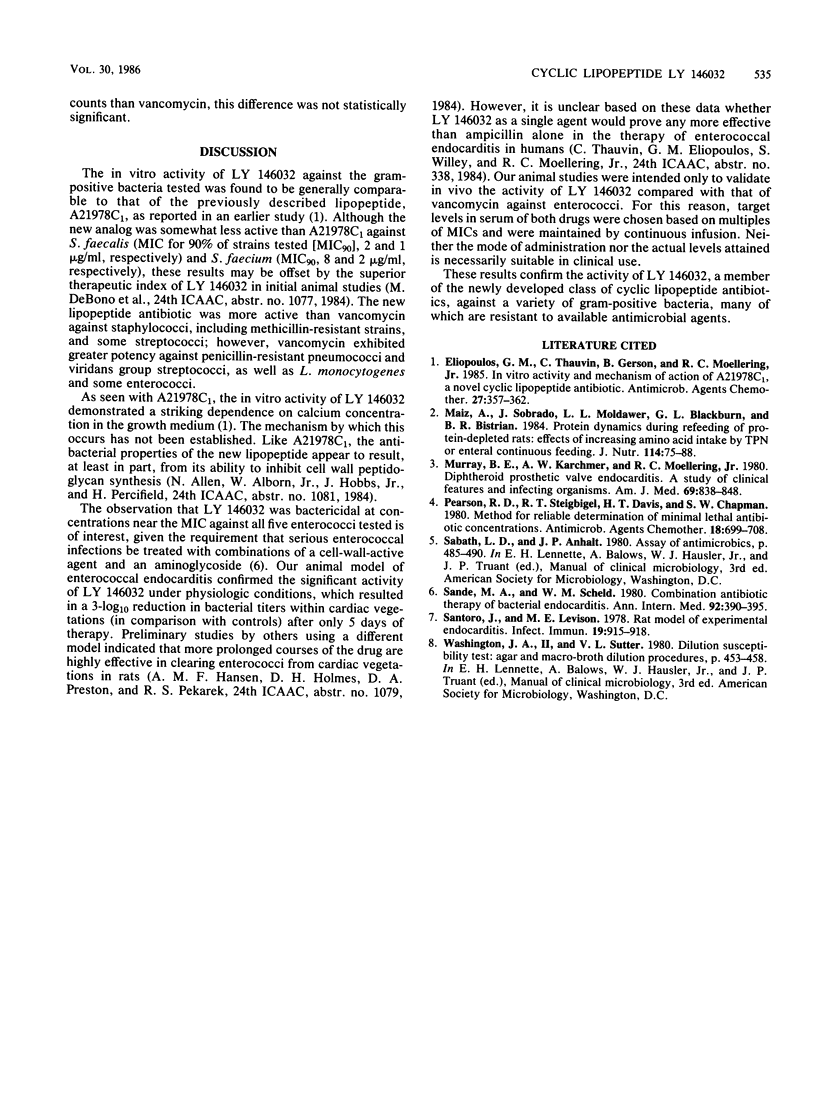Abstract
The in vitro activity of LY 146032, a cyclic lipopeptide antibiotic belonging to the class of agents designated A21978C, was compared with those of vancomycin, cefpirome, cefotaxime, and clindamycin against selected gram-positive bacteria. The new drug inhibited all staphylococcal isolates, including methicillin-resistant strains, at concentrations of less than or equal to 1.0 microgram/ml. The activity of LY 146032 was comparable to that of vancomycin against most streptococci, but the latter demonstrated greater potency against Streptococcus faecium and penicillin-resistant strains of pneumococci and viridans group streptococci. LY 146032 was markedly less active than vancomycin against Listeria monocytogenes (MICs for 90% of strains tested, 16 and 1.0 microgram/ml, respectively). The activity of LY 146032 was enhanced as the concentration of calcium in the test medium was increased. MBCs were within eightfold of the MIC for each of 12 strains tested. In a rat model of enterococcal endocarditis, the administration of LY 146032 resulted in increased survival and a reduction in the bacterial titer within cardiac vegetations compared with untreated control animals.
Full text
PDF



Selected References
These references are in PubMed. This may not be the complete list of references from this article.
- Eliopoulos G. M., Thauvin C., Gerson B., Moellering R. C., Jr In vitro activity and mechanism of action of A21978C1, a novel cyclic lipopeptide antibiotic. Antimicrob Agents Chemother. 1985 Mar;27(3):357–362. doi: 10.1128/aac.27.3.357. [DOI] [PMC free article] [PubMed] [Google Scholar]
- Maiz A., Sobrado J., Moldawer L. L., Blackburn G. L., Bistrian B. R. Protein dynamics during refeeding of protein-depleted rats: effects of increasing amino acid intake by TPN or enteral continuous feeding. J Nutr. 1984 Jan;114(1):75–88. doi: 10.1093/jn/114.1.75. [DOI] [PubMed] [Google Scholar]
- Murray B. E., Karchmer A. W., Moellering R. C., Jr Diphtheroid prosthetic valve endocarditis. A study of clinical features and infecting organisms. Am J Med. 1980 Dec;69(6):838–848. doi: 10.1016/s0002-9343(80)80009-x. [DOI] [PubMed] [Google Scholar]
- Pearson R. D., Steigbigel R. T., Davis H. T., Chapman S. W. Method of reliable determination of minimal lethal antibiotic concentrations. Antimicrob Agents Chemother. 1980 Nov;18(5):699–708. doi: 10.1128/aac.18.5.699. [DOI] [PMC free article] [PubMed] [Google Scholar]
- Sande M. A., Scheld W. M. Combination antibiotic therapy of bacterial endocarditis. Ann Intern Med. 1980 Mar;92(3):390–395. doi: 10.7326/0003-4819-92-3-390. [DOI] [PubMed] [Google Scholar]
- Santoro J., Levison M. E. Rat model of experimental endocarditis. Infect Immun. 1978 Mar;19(3):915–918. doi: 10.1128/iai.19.3.915-918.1978. [DOI] [PMC free article] [PubMed] [Google Scholar]


